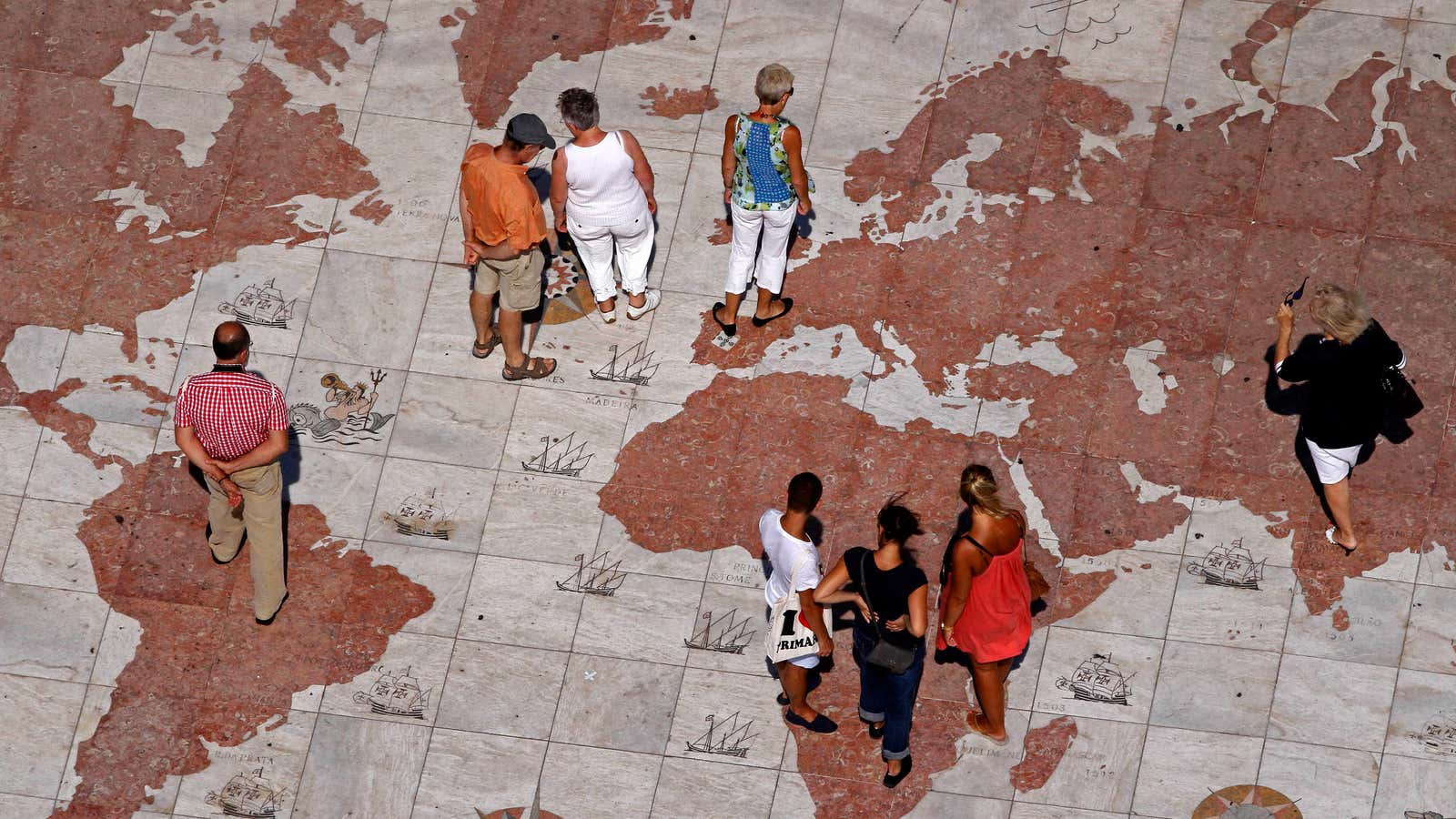Our first experience with Montessori involved geography, and a four-year-old boy who taught us to see the world differently.
Here’s what happened: A handful of prospective Montessori teachers unexpectedly gravitated towards a puzzle map of Europe. We gathered around and slowly, assuredly, we removed the pieces. Once we had sufficiently disorganized them, we tried to return the countries back to their rightful place on the map.
Little by little, we each realized that, despite our experiences and education—many in the room had graduate degrees—we literally had no idea where a handful of countries would be placed on the map. Not only that, we were unable to identify their names. We were, to be sure, more than slightly embarrassed.
Then, a four-year-old boy entered the room.
We can’t exactly remember the circumstances of his timely arrival. As we recall, he was staying a little late after school, waiting for his family to pick him up. He heard some commotion next door and wanted to see what was happening in his classroom. He walked over to where we were positioned around the map of Europe and introduced himself, extending his hand for a shake. “What a gentleman,” someone observed. Then, in a polite but confident tone, the young boy asked, “Do you want me to show you where those pieces go?”
We were bewildered.
“Yes!” someone said finally. “Please, do show us,” someone else said skeptically. Then, the child—with no presumptions, judgments, conceits, or any of the traditional assumptions of knowledge—carefully but confidently, lifted the individual pieces and placed them in their proper places on the board.
“This is Lichtenstein,” he said, as the puzzle piece smoothly went into its place.
We were mesmerized.
What struck us most wasn’t his knowledge—it was something much more profound. Personally, it was a transformational moment, and set my family on the course we continue on today.
Children have so much to offer, if we only learn to take them more seriously. There’s real wizardry in childhood, if we don’t gloss it over with the false appearances of our own perceived knowledge. Watching the boy accomplish his task was example of many things: independence, confidence, a passionate desire to learn. He didn’t have to be forced or cajoled; it was just natural. More broadly speaking, this experience was an important reminder that we need to give our children room to really revel in their interests, to move beyond memorization and towards deeper understanding.
Persistence and accomplishment leads to contentment. It’s the same way one might feel after finally finishing Proust or pushing through the final chapters of War and Peace. It’s one we imagine America’s founding fathers had, as they worked tirelessly to secure our own political independence.
It’s also important to note the pride this boy took in his work. He was interested in trying to push himself — to prove to himself that he could do it again and again, with a renewed sense of discovery each time. The confidence to learn is often more important than what is learned.
During this holiday weekend, it’s a good time to take a second and reflect on what truly inspires us. What gives us, as individuals, our own sense of independence? And how can we apply that sense of joyful independence to help us engage more actively and participate more readily in the world—to make it a better place, even? Cultivating a better geographical and cultural appreciation for the world, in the next generation as well as in our own, is a pretty good place to start.
